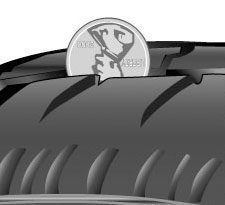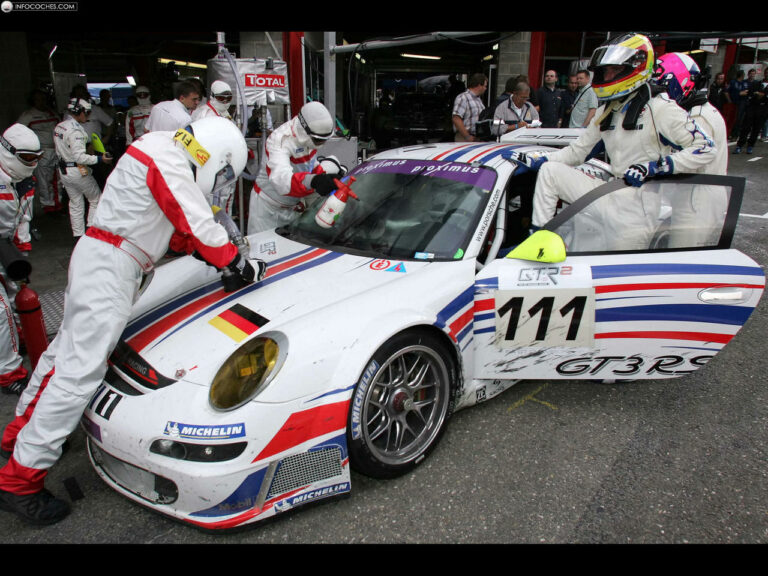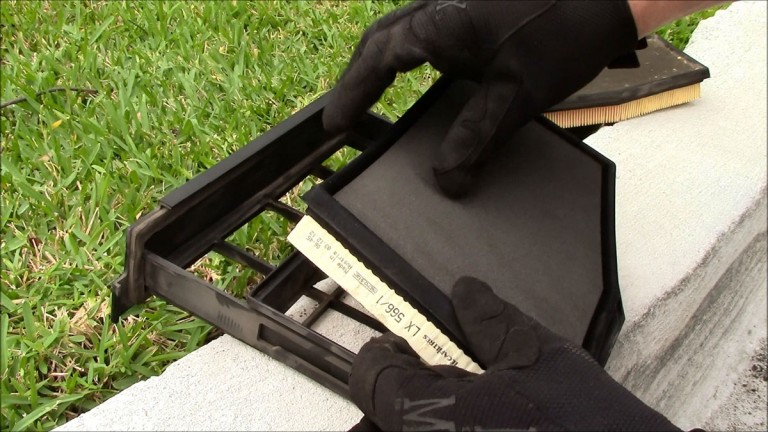| Don’t Just Kick Them! Otto Silva IRPCA Vice-PresidentI was born and raised as a mechanics son. While my friends were learning to fish or camp I learned to fetch tools, the correct usage of a tire gauge, find squeaking noises and to tune a car by the time I was 12. I rotated my first set of tires (by myself and without the aid of an air compressor) by the time I was 14. Although this may not seem as a huge accomplishment, I was living in a third world country; money was always tight, and I learned that proper tire care could extend the life of such a precious investment. Today I would like to write about extending the life of our tires.Inflation According to the Rubber Manufactures Association (RMA) under-inflation is the leading cause of tire failure. As many of you had noticed the “suggested amount” of air for your tires as specified by Porsche is shown on your vehicle’s front/rear trunk or the door edge of your vehicle. It is also listed in the owner’s manual or should be given to you when you purchase new tires. Here are a few tips: 1. On a regular basis visually inspect your tires to make sure there are no nails or other objects embedded that could poke a hole in the tire and cause an air leak. I once found a screw in one of my brand new tires on my way to Miller Motorsports Park on my way to my first DE…I’ll save that story for another occasion. Alignment Misalignment of wheels in the front or rear can cause uneven and very rapid tread wear and should be corrected by your local mechanic or tire dealer. If your tire dealer doesn’t have the equipment to do alignments, ask them to refer you to someone they trust. Have your alignment checked periodically or whenever you have an indication of trouble such as “pulling” or vibration. By pulling I mean letting go of the wheel on an empty flat level road and seeing if your car veers to the left or right of your lane. If the car veers, you should first make sure all of your tires have the correct tire pressure before spending the money to get your car aligned. |
|
 |
|
| RotationRotation refers to the regular practice of switching the position of each tire on the car. Tire rotation helps to equalize tread wear and is critical to gain the maximum life from your tire investment. | |
 |
|
| Sometimes irregular tire wear can be corrected by rotating your tires. Granted, this may not be possible on many Porsches which have different size tires (front and back) or directional tires. If your tires show uneven wear, ask your tire dealer to check for and correct any misalignment, imbalance or other mechanical problem involved before rotation. If all 4 of your vehicle tires are the same size, rotate them every 6,000 to 8,000 miles or as recommended by your tire dealer. I like even numbers so I rotate them every 5,000 miles – since I find it easier to remember to have my tires rotated at 35,000, 40,000, 45,000 miles, etc.Remember that your tire warranty may be voided if you fail to rotate your tires. I have heard many disappointed car owners complain about how their 40,000 tires appear to be worn out after only 20,000 of wear. Make sure you record your odometer reading every time you rotated your tires to avoid this problem. I found it useful to use the same tire dealer or to keep your rotation receipts for safe keeping. When in doubt call your tire dealer and have them look up your record so you know when you should get your tires rotated next.Balancing
The technical definition of balance is the uniform distribution of mass about an axis of rotation, where the center of gravity is in the same location as the center of rotation. An out-of-balance tire and wheel assembly: o Degrades ride quality and driver comfort. o Shortens the life of tires, bearings, shock absorber, and other suspension components. Vibration is the most noticeable effect of imbalance. o It is dependent on vehicle speed and may be felt in the steering wheel, seats or floor board. Properly balanced tires are important for driving comfort and long tire life. Unbalanced tires can cause vibration, resulting in driver fatigue, premature tire wear and unnecessary wear to your vehicle’s suspension. Tires should be balanced when they are mounted on wheels for the first time or when they are remounted after repair. Tires should be rebalanced at the first sign of vibration or “shimmy.” Vibration may also be due to misalignment or mechanical problems. For sake of example, assume you have driven your tires 5,000 miles since their purchase and it’s time to rotate. Over the miles, turning left and right, hitting bumps and potholes you could not see or avoid, and driving down uneven road surfaces have led to uneven tread wear on your tires. Perhaps a pothole has knocked-out your vehicle’s alignment (this creates uneven tire wear). Well, besides rotating the tires and getting an alignment to set things right, you should also rebalance the tires. Even if you can’t feel vibrations, they are present. The uneven tread wear has created an imbalance that generates excessive heat and wear on your tires! Considering the hundreds of dollars you spent on your tires, a rebalance is a wise expenditure. Most tire stores sell a Lifetime Balancing program. For a nominal, one-time charge you can have your tires balanced at every rotation. Tread Tires MUST be replaced when the tread is worn down to 1/16 of an inch in order to prevent skidding and hydroplaning. An easy way to test this depth is to place a penny into a tread groove. If part of the Lincoln’s head is covered by the tread, you are driving with the proper amount of tread. If you can see all of his head, it is time to take a trip to your tire dealer and spend some money. |
|
Unsafe |
Safe |
| Today, many tires have built-in tread wear indicators, or “wear bars,” which look like narrow strips of smooth rubber. These ½ inch indicators are located in several positions around the circumference of he tire. As long as the tread grooves are at least 1/16 deep, the grooves are unbroken. When the tread depth reaches that point, the tread wear indicators will appear as solid strips across the tire. These strips interrupt tread continuity and are clearly visible upon inspection. When this occurs your tires should be replaced. | |
 |
 |
| Visually check for tires for signs of uneven wear. You may have irregular tread wear if there are high and low areas or unusually smooth areas.If properly cared for, tires can last a long time – usually from 40,000 to 60,000 miles, depending on how many auto-cross or MMP events you attend each year J. Remember the major par of the handling and grip of your car depends on your tires – take care of them and don’t let neglect diminish their life. | |
Don’t Just Kick Them




